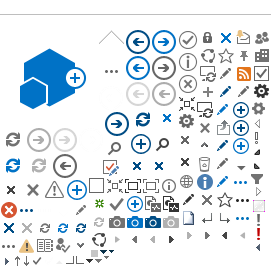Digital Inclusion for All
Shaping our Digital Future
Online Global Dialogue
16 February 2021
Opening Remarks
Doreen Bogdan-Martin
Director, ITU Telecommunication Development Bureau
Good morning, good afternoon and good evening from Geneva.
We are pleased to be a partner of this event on Digital Inclusion for All, of the 59th session of the Commission for Social Development,
When the UN Secretary-General Guterres addressed the Member States on priorities for 2021, identified the urgent need ‘’to seize the opportunities of digital technologies’’, and address the ‘’yawning gap in access to these tools.’’
That is a big task. Because, right now, 3.7 billion people still lack any form of online access. That’s 49% of the world’s population.
Information and communication technologies have taken the world by storm. Never in human history has any technology been so rapidly embraced.
But we have reached an inflection point in our mission to connect the world. Getting the remaining 49% of people online will be a whole different ballgame.
This time around, business as usual is not going to work. We need to radically change our approach, and shift from a highly competitive mindset to a collaborative, cross-sectoral mindset.
We need to work together to get networks out into rural areas where it might not have been profitable to go – because the bottom line is that we all profit enormously from bringing that half of our planet still unconnected into our global digital community.
We need their voices, their participation, and their engagement, if we are truly to harness the potential of digital to achieve our SDGs. To get where we want to go, we need to put in place the right regulatory policies to create investment-friendly enabling environments.
But at the same time, we also need to change our strategies, and focus on implementing a ‘Whole-of-Government’ approach that can deliver meaningful digital services at scale, and with greater return on investment.
Our Smart Village project in Niger is built around this holistic approach, and is a solid example of work towards SDG 16 to promote inclusive societies (and SDGs 3, 4, 5, 9,10 and 17).
Ladies and gentlemen,
‘Digital inclusion’ was well placed in the UNSG's roadmap, stressing that those digital divides reflect and amplify existing social, cultural and economic inequalities.
So who is being left behind?
Certain communities – women, persons with disabilities, the elderly, and those with poor literacy, rural and remote – these are the groups that experience the most acute forms of digital exclusion.
Let’s not forget the situation of people on the move, including migrants, or those facing emergency and conflict-affected situations, given that these most vulnerable communities often face additional challenges in achieving connectivity.
ICTs have tremendous scope to open up a world of new opportunities and possibilities for these and other marginalized groups.
How do we get there? I have mentioned the need for enabling frameworks, the whole of government approach. We also need to think more actively and creatively about accessibility issues when designing devices. We need to think about affordability, cost and meaningfulness… what do you get when you get connected? And in what languages?
And let’s not forget the skills. To achieve inclusive digital societies, we need to ensure those digital skills are in place, as they open up rewarding career paths and pave the way towards greater social and economic empowerment.
I want to quickly share innovative solutions and good practices that are examples of partnerships and opportunities for stakeholders to engage. On our side we have launched a series of Digital Transformation Centres partnership with Cisco and other partners, which is delivering training to people at all levels of the e-skills pyramid to ensure that a lack of knowledge and skills is not a barrier to participation in the digital economy.
Our EQUALS Global Partnership is another example of a successful, multi-stakeholder initiative focused on SDGs 5 and 10 to achieve gender equality and reduce inequalities by bridging the gender digital divide in access, skills and in the tech sector.
COVID has showed like nothing else could what it means to be digitally excluded especially for many millions of learners. With 1.6 billion young people impacted by school closures, we know that at least one third of them do not have any form of connectivity or device to be connected.
The Malala foundation estimates that at least 20 million affected girls will no go back to school… That alone is a rallying call for the urgency to close the digital divide. And advocate for digital inclusion for all.
To respond, on our side we ramped up our Giga partnership between ITU, UNICEF and others aims to connect every school to the internet, and every young person to information, opportunity and choice. This project was launched pre-pandemic – and a result of COVID we have redoubled our efforts and broadened our scope, so that classroom connectivity can also serve as a vital connectivity hub for entire communities.
Ladies and gentlemen,
As we accelerate our efforts in this final Decade of Action leading up to the 2030 target date for the UN Sustainable Development Goals, there’s no doubt that we’re going to have to ‘power through with digital’.
We can only get there through partnerships. With a strong focus on SDG17, Partnerships for Development, I believe ITU’s World Telecommunication Development Conference 2021 in November will prove a truly landmark development conference in leveraging the power of partnership to connect the world, and deliver on our sustainable development pledge.
I invite you all to join us, and I look forward to forging new partnerships, pioneering new ways of collaborating, and working actively with all of you to harness the power of digital to “build back better’’ and shape a digital future for all.
